2018-11-15 - Nº 185

Editorial
Esta é a Newsletter Nº 185 que se apresenta com o mesmo formato que as anteriores. Se gostar da Newsletter partilhe-a!
Todas as Newsletters encontram-se indexadas no link.
Esta Newsletter tem os seguintes tópicos:
Faz hoje anos que nascia, em 1793, Michel Chasles. Este Matemático francês elaborou a teoria da geometria projetiva moderna, o estudo das propriedades de uma linha geométrica ou figura plana que permanece inalterada quando a figura é projectada em um plano a partir de um ponto não ou o plano ou a figura. No seu texto Traité de géométrie, em 1852, Chasles discute o rácio cruzado, lápis e involuções, todas as noções que ele introduziu.
Faz também anos hoje que nascia, em 1885, Frederick Handley Page. Este projectista de aviões britânico construiu o Handley Page 0/400, o primeiro bombardeiro bimotor do mundo para o Royal Flying Corps, um dos maiores aviões usados na Primeira Guerra Mundial, que realizou os seus primeiros bombardeiros em grande escala em instalações militares inimigas e bases submarinas em Novembro de 1916. Em 1918, ele tinha criado um bombardeiro de quatro motores que poderia atacar as zonas industriais do Saar e do Ruhr, na Alemanha. Em 1930, ele produziu o primeiro avião civil de 40 lugares, o Hércules. Para a Segunda Guerra Mundial, Page voltou a produzir aviões militares, sendo o mais importante o bombardeiro Halifax. O governo comprou 7.000 desses aviões. Ele foi condecorado pela sua contribuição para o esforço de guerra. Depois da guerra, Page projetou o bombardeiro a jato de quatro motores, o Victor.
Nesta semana que passou ficámos a conhecer o novo Raspberry PI 3 modelo A+. Passou a ser possível ter no footprint do modelo A as capacidades de velocidade de relógio de 1.4Ghz e o mesmo processador do modelo 3 B+ assim como as melhorias térmicas deste ultimo. Com um preço base de 25 USD este novo modelo apenas trás 512MB de memória, uma porta USB 2.0 e não tem Ethernet. No entanto tem Dual-band 802.11ac Wifi e Bluetooth 4.2/BLE.
Ficámos hoje a saber que a SpaceX conseguiu mais um sucesso conseguindo fazer o lançamento de um satélite do Qatar e aterrando com sucesso. O Falcon 9 de dois estágios descolou às 3:46 da tarde. EST (2046 GMT) de hoje (15 de novembro) do complexo de lançamento 39A no Kennedy Space Center da NASA, na Florida. Cerca de 32 minutos depois, o foguetão libertou com sucesso sua carga, o satélite de comunicações Es'hail-2, numa órbita de transferência geo-estacionária elíptica.
Na Newsletter desta semana apresentamos diversos projetos de maker assim como alguns modelos 3D que poderão ser úteis.
 João Alves ([email protected])
João Alves ([email protected])
O conteúdo da Newsletter encontra-se sob a licença  Creative Commons Attribution-NonCommercial-ShareAlike 4.0 International License.
Creative Commons Attribution-NonCommercial-ShareAlike 4.0 International License.
Novidades da Semana
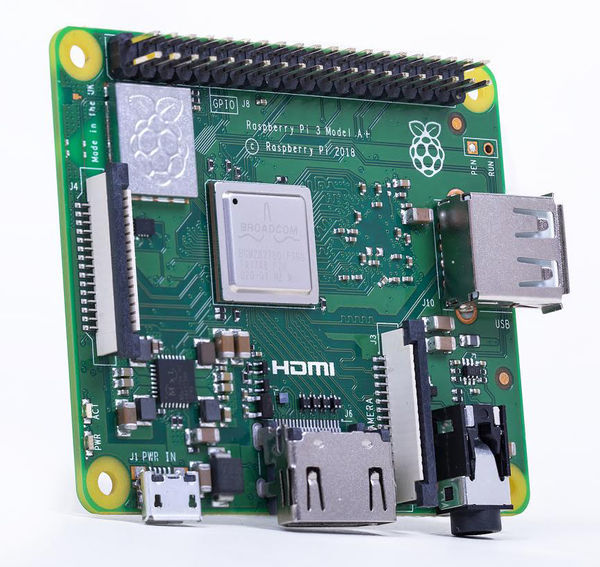
New product: Raspberry PI 3 Model A+ on sale now at $25
"TL;DR: you can now get the 1.4GHz clock speed, 5GHz wireless networking and improved thermals of Raspberry Pi 3B+ in a smaller form factor, and at the smaller price of $25. Meet the Raspberry Pi 3 Model A+. Long-time readers will recall that back in 2014 the original Raspberry Pi 1 Model B+ was followed closely by a cut-down Model A+. By halving the RAM to 256MB, and removing the USB hub and Ethernet controller, we were able to hit a lower price point, and squeeze the product down to the size of a HAT. Although we didn’t make A+ form-factor versions of Raspberry Pi 2 or 3, it has been one of our most frequently requested “missing” products. Now, with Raspberry Pi 3 Model B+ shipping in volume, we’re able to fill that gap by releasing Raspberry Pi 3 Model A+." [...]

A Used SpaceX Rocket Just Launched a Satellite for Qatar, Then Aced a Landing
"A pre-flown SpaceX Falcon 9 rocket has aced another launch-and-landing mission. The two-stage Falcon 9 lifted off at 3:46 p.m. EST (2046 GMT) today (Nov. 15) from Launch Complex 39A at NASA's Kennedy Space Center in Florida. About 32 minutes later, the rocket successfully deployed its payload, the Es'hail-2 communications satellite, into an elliptical geostationary transfer orbit. The rocket's first stage was already back on Earth at that point, standing tall on the deck of the SpaceX droneship "Of Course I Still Love You," which was stationed in the Atlantic Ocean off the Florida coast. The booster touched down on the robotic ship about 8.5 minutes after liftoff. [See more photos of SpaceX's Es'Hail-2 satellite launch!]" [...]
Outras Notícias

Elon Musk's SpaceX Wins FCC Approval to Deploy 7,518 Satellites
"Elon Musk’s SpaceX won permission to deploy more than 7,000 satellites, far more than all operating spacecraft currently aloft, from U.S. regulators who also moved to reduce a growing risk from space debris as skies grow more crowded. Space Exploration Technologies Corp. has two test satellites aloft, and it earlier won permission for a separate set of 4,425 satellites -- which like the 7,518 satellites authorized Thursday are designed to provide broadband communications. It has said it plans to begin launches next year. Space companies riding innovations that include smaller and cheaper satellites -- with some just 4 inches long and weighing only 3 pounds -- are planning fleets that will fly fast and low, offering communications now commonly handled by larger, more expensive satellites. Right now there are fewer than 2,000 operating satellites, and the planned additional space traffic demands vigilance, Federal Communications Commission Chairman Ajit Pai said before the agency voted Thursday on a variety of space-related matters including SpaceX’s application, debris rules, and other space matters. “Even a centimeter-wide object can wreak devastating damage to satellites,” Pai said." [...]

The next version of HTTP won't be using TCP
"HTTP is switching to a protocol layered on top of UDP. The next version of the Hypertext Transfer Protocol (HTTP)—the network protocol that defines how browsers talk to Web servers—is going to make a major break from the versions in use today. Today's HTTP (versions 1.0, 1.1, and 2) are all layered on top of TCP (Transmission Control Protocol). TCP, defined as part of the core set of IP (Internet Protocol) layers, provides reliable, ordered, and error-checked delivery of data over an IP network. "Reliable" means that if some data goes missing during transfer (due to a hardware failure, congestion, or a timeout), the receiving end can detect this and demand that the sending end re-send the missing data; "ordered" means that data is received in the order that it was transmitted in; "error-checked" means that any corruption during transmission can be detected. These are all desirable properties and necessary for a protocol such as HTTP, but TCP is designed as a kind of one-size-fits-all solution, suitable for any application that needs this kind of reliability." [...]
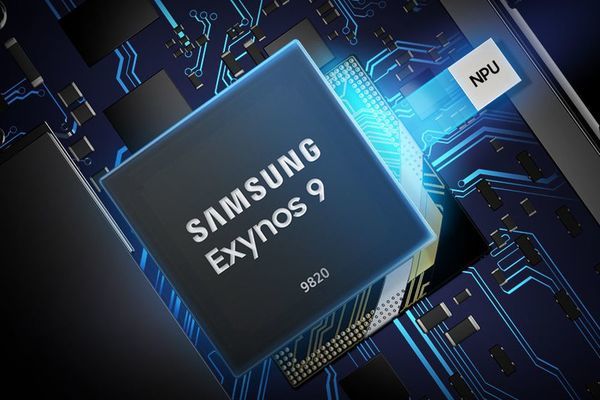
On-device AI processing with the new Exynos 9 Series 9820
"Fourth-generation custom core and 2.0Gbps LTE Advanced Pro modem enables enriched mobile experiences including AR and VR applications Samsung Electronics Co., Ltd., a world leader in advanced semiconductor technology, today announced its latest premium application processor (AP), the Exynos 9 Series 9820, equipped for on-device Artificial Intelligence (AI) applications. The Exynos 9820 features a fourth-generation custom CPU, 2.0-gigabits-per-second- (Gbps) LTE Advanced Pro modem, and an enhanced neural processing unit (NPU) to bring new smart experiences to mobile devices. “As AI-related services increase and their utilization diversify in mobile devices, its processors require higher computational capabilities and efficiency,” said Ben Hur, vice president of System LSI marketing at Samsung Electronics. “The AI capabilities in the Exynos 9 Series 9820 will provide a new dimension of performance in smart devices through an integrated NPU, high-performance fourth-generation custom CPU core, 2.0Gbps LTE modem and improved multimedia performance.” Exynos 9820 is an intelligent powerhouse with a separate hardware AI-accelerator, or NPU, which performs AI tasks around seven times faster than the predecessor. With the NPU, AI-related processing can be carried out directly on the device rather than sending the task to a server, providing faster performance as well as more security for personal information. The NPU will enable a variety of new experiences such as instantly adjusting camera settings for a shot based on the surroundings or recognizing objects to provide information in augmented or virtual reality (AR or VR) settings." [...]
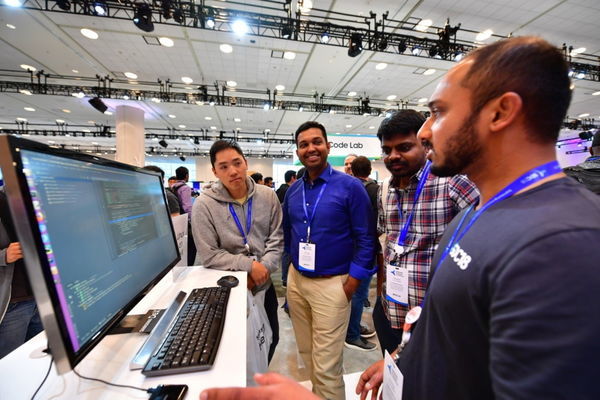
SDC18: Linux on DeX Will Make It Easier for Developers to Code on the Go
"Samsung DeX offers the best of both worlds when it comes to mobile productivity by enabling Samsung’s latest flagship Galaxy mobile devices to power a PC-like experience that’s ideal for getting work done on the go, or simply watching movies, gaming, or browsing the web on a bigger screen. Developers, especially, appreciate the seamless mobility that Samsung DeX brings to their work. And now, with the new Linux on DeX app, Samsung is making it even easier for developers to code on the go. When it was first demoed at last year’s Samsung Developer Conference in San Francisco, Linux on DeX generated significant buzz within the developer community by presenting a simple and convenient way to use Samsung DeX to build apps within a Linux development environment. The combination of Samsung DeX and the Linux on DeX app adds new levels of flexibility to developers’ work by allowing them to connect their Galaxy device to a monitor using just an HDMI adapter, and instantly enjoy a fuller computing experience when on the go. Linux on DeX frees developers from their desks by allowing them to access a PC-like Linux development environment anytime, anywhere." [...]
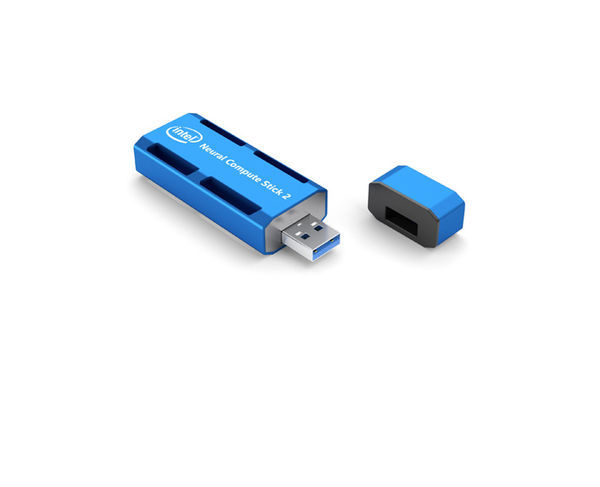
Intel Unveils the Intel Neural Compute Stick 2 at Intel AI Devcon Beijing for Building Smarter AI Edge Devices
"Intel is hosting its first artificial intelligence (AI) developer conference in Beijing on Nov. 14 and 15. The company kicked off the event with the introduction of the Intel® Neural Compute Stick 2 (Intel NCS 2) designed to build smarter AI algorithms and for prototyping computer vision at the network edge. Based on the Intel® Movidius™ Myriad™ X vision processing unit (VPU) and supported by the Intel® Distribution of OpenVINO™ toolkit, the Intel NCS 2 affordably speeds the development of deep neural networks inference applications while delivering a performance boost over the previous generation neural compute stick. The Intel NCS 2 enables deep neural network testing, tuning and prototyping, so developers can go from prototyping into production leveraging a range of Intel vision accelerator form factors in real-world applications. “The first-generation Intel Neural Compute Stick sparked an entire community of AI developers into action with a form factor and price that didn’t exist before. We’re excited to see what the community creates next with the strong enhancement to compute power enabled with the new Intel Neural Compute Stick 2.” –Naveen Rao, Intel corporate vice president and general manager of the AI Products Group What It Does: Bringing computer vision and AI to Internet of Things (IoT) and edge device prototypes is easy with the enhanced capabilities of the Intel NCS 2." [...]
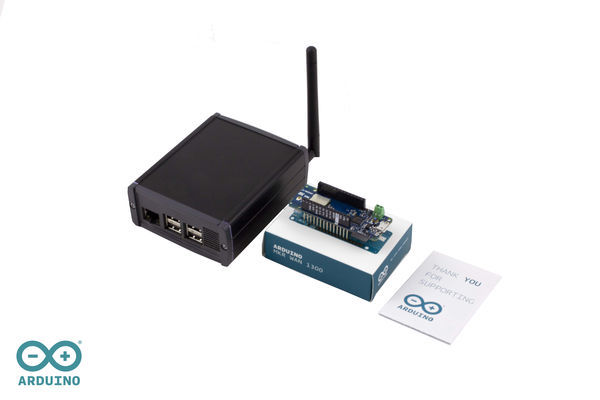
Arduino PRO Gateway for LoRa now available for pre-order
"We are very happy to announce the Arduino PRO Gateway for LoRa! Combined with Arduino MKR WAN 1300 IoT nodes, it makes an ideal solution for a wide range of applications, like smart agriculture, smart cities and building automation – and many other remote monitoring use cases requiring long range, low power wireless connectivity. The gateway can be used globally and enables multiple channel management. By supporting advanced features like Listen Before Talk (LBT), it allows users to transmit at higher power on the first free channel, achieving longer ranges than conventional gateways for LoRa. Arduino continues its mission of making complex technology easy enough for anyone to use. Customers of the Arduino PRO Gateway will be given exclusive beta access to the Arduino IoT Cloud, which makes installation, provisioning and remote management of the gateway incredibly simple through the popular Arduino Create cloud platform." [...]
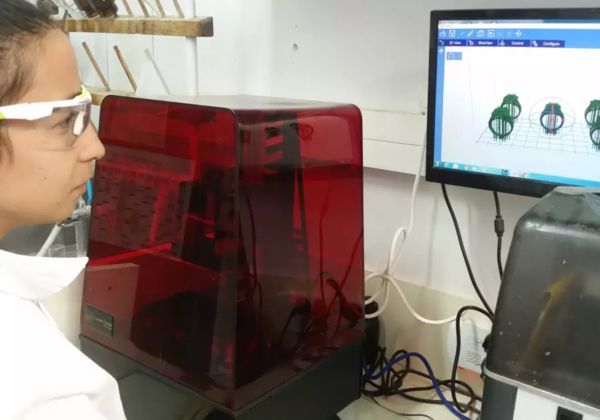
Israeli Researchers Develop Technology For 3-D Printing Of Drugs
"The new technology enables the printing of personalized medications out of hydrogel objects. Researchers from Jerusalem’s Hebrew University unveiled their novel technology for three-dimensional printing of drug capsules on Wednesday, enabling the customization and personalization of medications unavailable with conventional manufacturing techniques. Prof. Shlomo Magdassi, head of the university’s 3-D and Functional Printing Center, and Dr. Ofra Benny, a researcher at the university’s Institute for Drug Research, presented their cutting-edge technology at the second annual 3-D Printing and Beyond conference in Jerusalem, which attracted 3-D printing experts from a range of global industries. The new technology enables the printing of personalized medications out of hydrogel objects, producing complex structures which can expand, change shape and activate on a delayed schedule. By prescribing personalized medicines, doctors will be able to accurately tailor the exposure and dosage levels for individual patients. “We now have the technology to replace standard or traditional formulations." [...]

Parker Solar Probe Breaks Record, Becomes Closest Spacecraft to Sun
"Parker Solar Probe now holds the record for closest approach to the Sun by a human-made object. The spacecraft passed the current record of 26.55 million miles from the Sun's surface on Oct. 29, 2018, at about 1:04 p.m. EDT, as calculated by the Parker Solar Probe team. The previous record for closest solar approach was set by the German-American Helios 2 spacecraft in April 1976. As the Parker Solar Probe mission progresses, the spacecraft will repeatedly break its own records, with a final close approach of 3.83 million miles from the Sun's surface expected in 2024. “It’s been just 78 days since Parker Solar Probe launched, and we’ve now come closer to our star than any other spacecraft in history,” said Project Manager Andy Driesman, from the Johns Hopkins Applied Physics Laboratory in Laurel, Maryland. “It’s a proud moment for the team, though we remain focused on our first solar encounter, which begins on Oct. 31.” Parker Solar Probe is also expected to break the record for fastest spacecraft traveling relative to the Sun on Oct. 29 at about 10:54 p.m. EDT." [...]
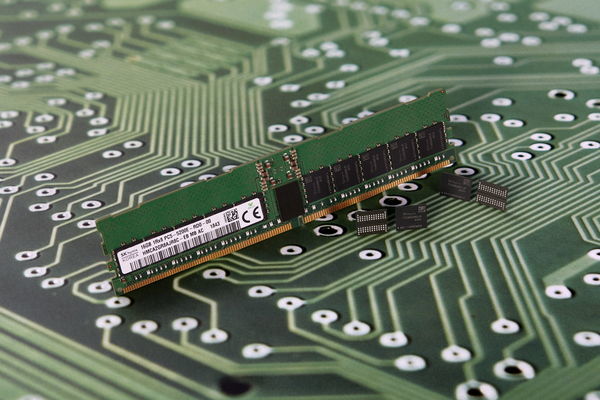
SK Hynix Inc. Announces 1Ynm 16Gb DDR5 DRAM
"SK Hynix Inc. (or ‘the Company’, www.skhynix.com) announced that it has developed 16Gb (Gigabits) DDR5 (Double Data Rate 5) DRAM, the industry’s first DDR5 to meet the JEDEC standards. The same 1Ynm process technology used for the recently-developed 1Ynm 8Gb DDR4 DRAM was applied to the new DRAM, giving an industry-leading competitive edge for the Company. DDR5 is a next-generation DRAM standard that offers ultra-high speed and high density with reduced power consumption as compared to DDR4, for use in data-intensive applications such as big data, artificial intelligence, and machine learning. SK Hynix successfully lowered the operating voltage from 1.2V to 1.1V, achieving 30% lower power consumption compared to the previous generation, DDR4 DRAM. The new 16Gb DDR5 DRAM supports a data transfer rate of 5200Mbps, about 60% faster compared to 3200Mbps of the previous generation, with which it can process 41.6GB (Gigabytes) of data—11 full-HD video files (3.7GB each)—per second. The Company provided a major chipset maker with RDIMM (Registered Dual In-line Memory Module) and UDIMM (Unbuffered DIMM) for server and PC platforms, with more memory banks—doubled from 16 to 32 banks—in accordance with the JEDEC DDR5 standards." [...]

The Most Luminous Galaxy Is Eating Its Neighbors
"The most luminous galaxy ever discovered is cannibalizing not one, not two, but at least three of its smaller neighbors, according to a new study published today (Nov. 15) in the journal Science and coauthored by scientists from NASA's Jet Propulsion Laboratory in Pasadena, California. The material that the galaxy is stealing from its neighbors is likely contributing to its uber-brightness, the study shows. Discovered by NASA's space-based Wide-field Infrared Survey Explorer (WISE) in 2015, the galaxy, called WISE J224607.55-052634.9, is by no means the largest or most massive galaxy we know of, but it radiates at 350 trillion times the luminosity of the Sun. If all galaxies were positioned an equal distance from us, WISE J224607.55-052634.9 (or W2246-0526 for short) would be the brightest. New observations using the Atacama Large Millimeter/submillimeter Array (ALMA) in Chile reveal distinct trails of dust being pulled from three smaller galaxies into W2246-0526. The trails contain about as much material as the smaller galaxies themselves, and it's unclear whether those galaxies will escape their current fate or will be completely consumed by their luminous neighbor." [...]
Ciência e Tecnologia

Study opens route to ultra-low-power microchips
"Innovative approach to controlling magnetism could lead to next-generation memory and logic devices. A new approach to controlling magnetism in a microchip could open the doors to memory, computing, and sensing devices that consume drastically less power than existing versions. The approach could also overcome some of the inherent physical limitations that have been slowing progress in this area until now. Researchers at MIT and at Brookhaven National Laboratory have demonstrated that they can control the magnetic properties of a thin-film material simply by applying a small voltage. Changes in magnetic orientation made in this way remain in their new state without the need for any ongoing power, unlike today’s standard memory chips, the team has found. The new finding is being reported today in the journal Nature Materials, in a paper by Geoffrey Beach, a professor of materials science and engineering and co-director of the MIT Materials Research Laboratory; graduate student Aik Jun Tan; and eight others at MIT and Brookhaven." [...]
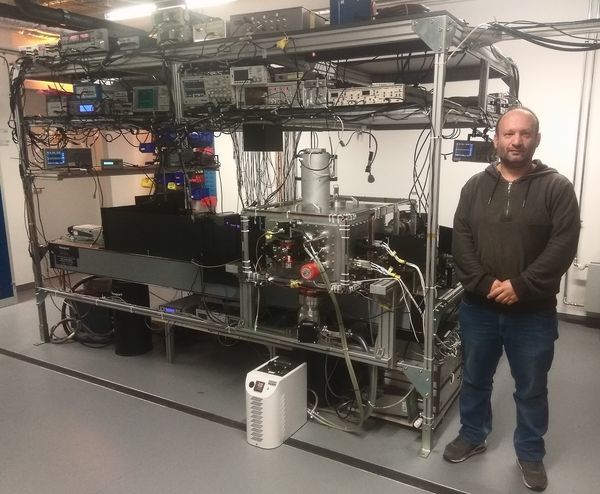
Atomic parity violation research reaches new milestone
"Measurement of parity violation for different isotopes of atomic ytterbium agrees with predictions of the Standard Model of particle physics A reflection always reproduces objects as a complete mirror image, rather than just its individual parts or individual parts in a completely different orientation. It's all or nothing, the mirror can't reflect just a little. This illustrates a fundamental symmetry principle in nature. For decades, physics assumed that the laws of nature in our world and in the mirror world would be identical, that parity would be preserved. Then in 1956, in the realm of elementary particles, or more precisely in the realm of the weak interaction, researchers discovered a violation of this principle. Parity violation has been a subject of scientific research ever since." [...]
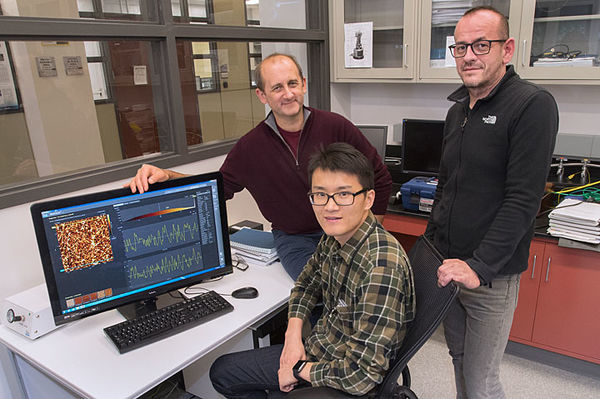
Detecting Light in a Different Dimension
"Electrically conductive polymer nanostructures that are many times longer than they are wide make graphene—atom-thin sheets of carbon—a better light detector Scientists from the Center for Functional Nanomaterials (CFN)—a U.S. Department of Energy (DOE) Office of Science User Facility at Brookhaven National Laboratory—have dramatically improved the response of graphene to light through self-assembling wire-like nanostructures that conduct electricity. The improvement could pave the way for the development of graphene-based detectors that can quickly sense light at very low levels, such as those found in medical imaging, radiation detection, and surveillance applications. Graphene is a two-dimensional (2-D) nanomaterial with unusual and useful mechanical, optical, and electronic properties. It is both extremely thin and incredibly strong, detects light of almost any color, and conducts heat and electricity well. However, because graphene is made of sheets of carbon only one atom thick, it can only absorb a very small amount of incoming light (about two percent). One approach to overcoming this problem is to combine graphene with strong light-absorbing materials, such as organic compounds that conduct electricity." [...]

Scientists improve smart phone battery life by up to 60-percent
"Scientists to improve battery life by minimizing power consumption of apps by 60-percent The solution integrates mobile computing with cloud computing Parts of apps that use too much power can be automatically offloaded to the cloud Computer scientists from Aston University have developed a way to drastically improve the battery-life of mobile devices, such as smart phones and tablets, by minimising the power consumption of mobile apps by as much as 60-percent. The research, which is published in Transactions on Emerging Telecommunications Technologies Journal, presents a solution that integrates mobile computing with cloud computing, with tools developed to identify the most power hungry parts of a mobile app and then moves them to the cloud using a technique called code-offloading. The scientists developed a mobile-cloud hybrid application framework for Android that hybridises mobile apps, executing them across both mobile and cloud platforms. Using the code-offloading technique the ‘power hungry’ parts of the mobile-cloud hybrid application are first identified, and then offloaded to the cloud and executed there, instead of on the device itself. As they execute on the cloud instead of the mobile device, the device’s own components are not used, power is saved which prolongs the battery life. Doctoral researcher Aamir Akbar, who developed the framework said: “So far, we have carried out experiments on two different Android apps." [...]
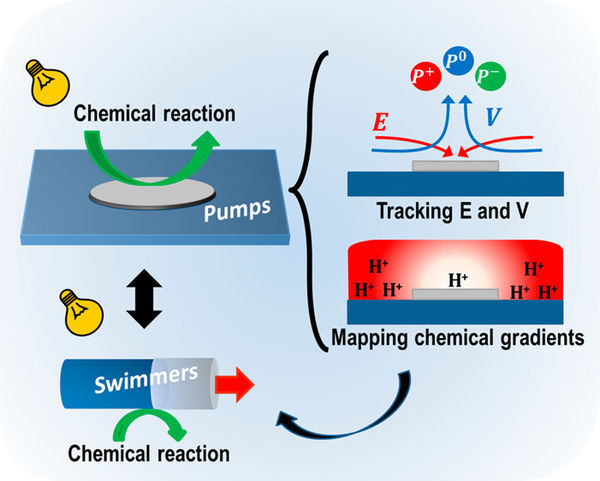
Micropumps as a platform for understanding chemically propelled micromotors
"ICN2 researchers investigate micropumps as a window into self-propelled micromotors and beyond. In the paper published this September in Accounts of Chemical Research, lead author Dr María José Esplandiu explains how their findings are important not only to harnessing the full potential of micro- and nanomotor technologies, but also to understanding active matter systems in nature. The development of self-propelled micro- and nanomachines able to emulate the intricate inner workings of the human body and/or the natural environment has captured the imagination of an ever expanding research community since the turn of the millennium. It is envisioned they will play an important role in such as nanomedicine and environmental remediation. One of the main challenges faced by scientists lies in the quest for efficient ways to power these machines without drawing on external sources. Advances have been made, with studies over the last decade or so have producing sample batches of motors able to capture, transport and deliver loads, or sense and neutralise chemical or biochemical pollutants, among many other tasks." [...]
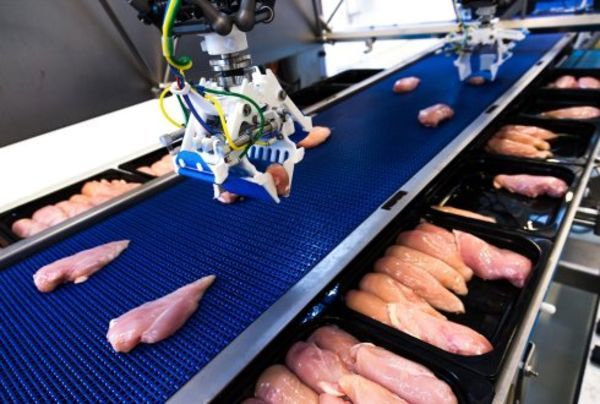
Flexible robotics for food production
"Robots that automatically harvest tomatoes or package biscuits in boxes of various sizes are now becoming a reality: Wageningen University & Research will be working together with various partners to develop flexible robotics for food production as part of the new and comprehensive FlexCRAFT research programme. The board of the Domain Applied and Engineering Sciences of the The Netherlands Organisation for Scientific Research (NWO) has made 2.7 million euros available for this research to which another 1.3 million euros has been added by the corporate sector. ‘Food production has to be as hygienic, efficient and sustainable as possible,’ explains head of the programme Eldert van Henten. ‘Moreover, fewer people are willing to do boring and heavy work in warm, humid greenhouses or cooled processing facilities in which products such as chicken are processed. Robots can provide a solution, as they never tire and function well at low temperatures. However, they do need to be able to handle the substantial variation in shape, size and hardness of different food products." [...]

Researchers create first-of-its-kind composable storage platform for high-performance computing
"Large-scale, advanced high-performance computing, often called supercomputing, is essential to solving both complex and large questions. Everything from answering metaphysical queries about the origins of the universe to discovering cancer-fighting drugs to supporting high-speed streaming services, requires processing huge amounts of data. But storage platforms essential for these advanced computer systems have been stuck in a rigid framework that required users to either choose between customization of features or high availability. Now, Virginia Tech researchers have found a way to give high-performance computing (HPC) data systems the flexibility to thrive with a first-of-its-kind framework called BespoKV, perhaps helping to one day achieve the HPC goal of performing at the exascale, or 1 billion billion calculations per second. The researchers will present their findings at the Association of Computing Machinery/IEEE Supercomputing Conference in Dallas, Texas, on Nov. 13. The main ingredient to the functioning of the new platform is key value (KV) systems." [...]
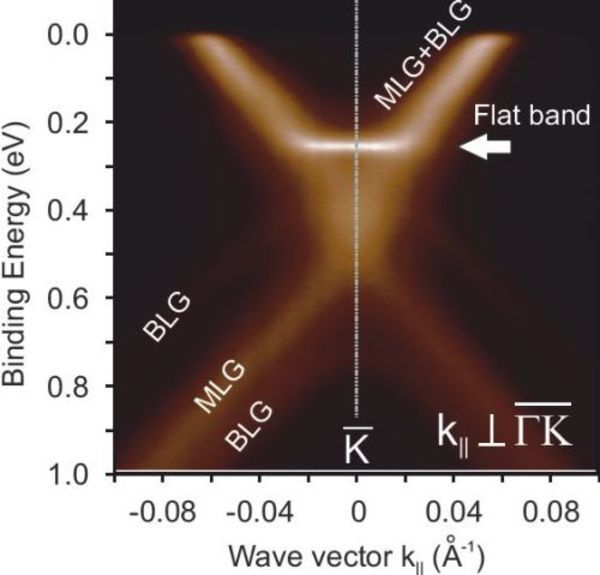
Graphene on the way to superconductivity
"Scientists at HZB have found evidence that double layers of graphene have a property that may let them conduct current completely without resistance. They probed the bandstructure at BESSY II with extremely high resolution ARPES and could identify a flat area at a surprising location. Carbon atoms have diverse possibilities to form bonds. Pure carbon can therefore occur in many forms, as diamond, graphite, as nanotubes, football molecules or as a honeycomb-net with hexagonal meshes, graphene. This exotic, strictly two-dimensional material conducts electricity excellently, but is not a superconductor. But perhaps this can be changed." [...]

Directivity to improve optical devices
"A team of researchers from AMOLF, Western University (Canada), and the University of Texas (USA) recently demonstrated the use of algorithmic design to create a new type of nanophotonic structure. This is good news for researchers in optical quantum computing and photovoltaics, because the structure is able to greatly improve the directivity of nanoscale emitters (in light emitting diodes, or single photon sources) and absorbers (in solar cells or photodetectors). The researchers publish their findings online in Nature Communications on November 9th, 2018. Directivity describes the ratio of light emission in one particular direction, to the total over all other directions. It is often useful for emitters to have high directivity so that all of the photons created by a nanoscale source can be collected elsewhere. This is particularly valuable in optical quantum computing applications where the collection from single photon emitters proves challenging." [...]

KAIST Introduces Faster and More Powerful Aqueous Hybrid Capacitor
"A KAIST research team made it one step closer to realizing safe energy storage with high energy density, high power density, and a longer cycle life. This hybrid storage alternative shows power density 100 times faster than conventional batteries, allowing it to be charged within a few seconds. Hence, it is suitable for small portable electronic devices. Conventional electrochemical energy storage systems, including lithium-ion batteries (LIBs), have a high voltage range and energy density, but are subject to safety issues raised by flammable organic electrolytes, which are used to ensure the beneficial properties. Additionally, they suffer from slow electrochemical reaction rates, which lead to a poor charging rate and low power density with a capacity that fades quickly, resulting in a short cycle life. On the other hand, capacitors based on aqueous electrolytes are receiving a great deal of attention because they are considered to be safe and environmentally friendly alternatives." [...]
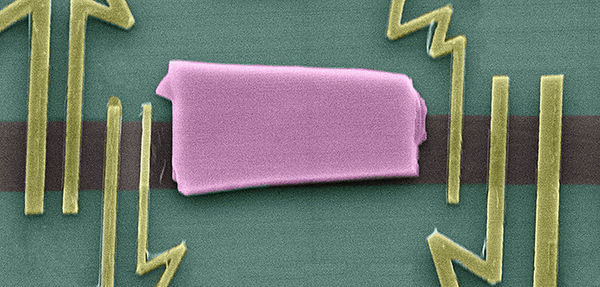
A New Spin on Hybrid Graphene Electronics
"A hybrid electronic device consisting of graphene and topological insulators have been demonstrated by researchers at Chalmers University of Technology in Sweden. The findings in the hybrid devices reveal a unique electronic spin functionality which is not present in the individual materials. The results were recently published in the prestigious journal Science Advances. In quantum physics, spin-orbit coupling is a relativistic interaction between the spin and momentum degrees of freedom of electrons. It is central to the novel topological phenomena observed in condensed matter physics and in practical use for various spintronic and quantum technologies. For example, the discovery of spin dependent electronic scattering phenomenon in solids by Nobel Laureates Albert Fert and Peter Grünberg has given rise to computer data storage, memory and sensor applications." [...]
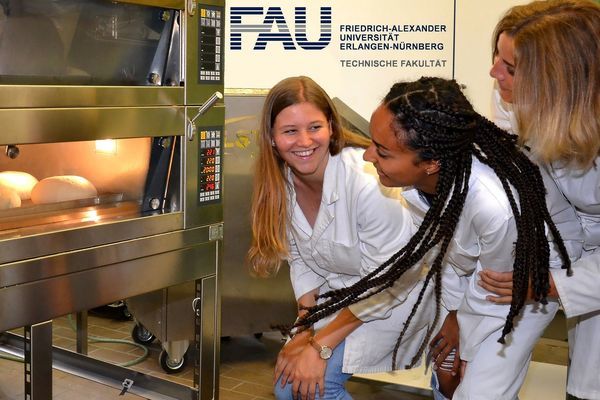
FAU researchers develop new baking method for improved energy efficiency in ovens
"You don’t necessarily think about energy efficiency and protecting the environment while taking a bite of your bread roll at breakfast time. But baked goods, or rather the baking process itself shouldn’t be underestimated – only a third of the heat generated by conventional ovens is used for baking. The remainder just heats the bakery. This is something researchers at FAU hope to change. They have developed and tested a prototype oven with a significantly more efficient combustion principle. The new oven, which was developed by Vojislav Jovičić, head of the research unit for Combustion Engineering at the Chair of Fluid Mechanics at FAU, in conjunction with FAU researchers and the Technische Universität München (TUM), not only saves energy." [...]

A burst of "synchronous" light
"Excited photo-emitters can cooperate and radiate simultaneously, a phenomenon called superfluorescence. Researchers from Empa and ETH Zurich, together with colleagues from IBM Research Zurich, have recently been able to create this effect with long-range ordered nanocrystal superlattices. This discovery could enable future developments in LED lighting, quantum sensing, quantum communication and future quantum computing. The study has just been published in the renowned journal "Nature". Some materials spontaneously emit light if they are excited by an external source, for instance a laser. This phenomenon is known as fluorescence." [...]

UMass Amherst Materials Scientists Create Fabric Alternative to Batteries for Wearable Devices
"A major factor holding back development of wearable biosensors for health monitoring is the lack of a lightweight, long-lasting power supply. Now scientists at the University of Massachusetts Amherst led by materials chemist Trisha L. Andrew report that they have developed a method for making a charge-storing system that is easily integrated into clothing for “embroidering a charge-storing pattern onto any garment.” As Andrew explains, “Batteries or other kinds of charge storage are still the limiting components for most portable, wearable, ingestible or flexible technologies. The devices tend to be some combination of too large, too heavy and not flexible.” Their new method uses a micro-supercapacitor and combines vapor-coated conductive threads with a polymer film, plus a special sewing technique to create a flexible mesh of aligned electrodes on a textile backing. The resulting solid-state device has a high ability to store charge for its size, and other characteristics that allow it to power wearable biosensors. Andrew adds that while researchers have remarkably miniaturized many different electronic circuit components, until now the same could not be said for charge-storing devices. “With this paper, we show that we can literally embroider a charge-storing pattern onto any garment using the vapor-coated threads that our lab makes." [...]
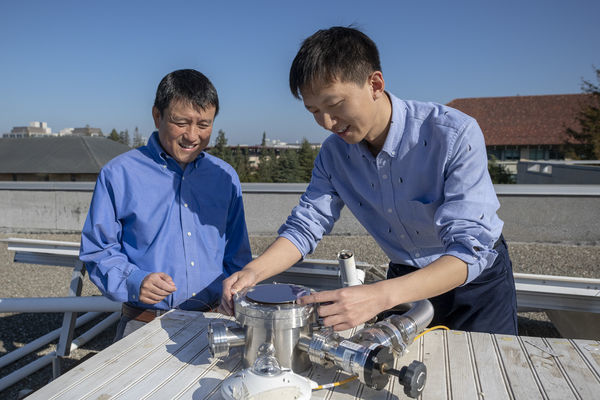
Stanford researchers develop a rooftop device that can make solar power and cool buildings
"A new rooftop device under development will be able to produce electricity from sunlight while also beaming heat directly into space to cool buildings. Stanford electrical engineer Shanhui Fan wants to revolutionize energy-producing rooftop arrays. Today, such arrays do one thing – they turn sunlight into electricity. But Fan’s lab has built a device that could have a dual purpose – generating electricity and cooling buildings. “We’ve built the first device that one day could make energy and save energy, in the same place and at the same time, by controlling two very different properties of light,” said Fan, senior author of an article appearing Nov. 8 in Joule. The sun-facing layer of the device is nothing new." [...]

Stretchy solar cells a step closer
"Rice University engineers give organic photovoltaics new properties Organic solar cells that can be painted or printed on surfaces are increasingly efficient, and now show promise for incorporation into applications like clothing that also require them to be flexible. The Rice University lab of chemical and biomolecular engineer Rafael Verduzco has developed flexible organic photovoltaics that could be useful where constant, low-power generation is sufficient. The research appears in the American Chemical Society journal Chemistry of Materials. Organic solar cells rely on carbon-based materials including polymers, as opposed to hard, inorganic materials like silicon, to capture sunlight and translate it into current. Organics are also thin, lightweight, semitransparent and inexpensive. While middle-of-the-road, commercial, silicon-based solar cells perform at about 22 percent efficiency — the amount of sunlight converted into electricity — organics top out at around 15 percent." [...]

Laser Architecture Can Create Complex Structures to Probe and Control Matter
"A New Laser Architecture Taps Coherent Light to Create Complex, Sophisticated Structures to Probe and Control Matter Universal light modulator may soon be a game-changer for photonics applications that require high power WASHINGTON-- Lasers have a unique ability to precisely drive, manipulate, control, and probe matter utilizing an incredible variety of methods. While they often operate behind the scenes, lasers are the backbone of revolutionary science and technology—including research advances that were the basis for the 2018 Nobel Prize in Physics. A new laser architecture called the universal light modulator, an intriguing new tool to probe and control matter, will be presented during the Optical Society’s (OSA) Laser Congress, 4-8 Nov., in Boston. It was developed by principal investigator Sergio Carbajo and research associate Wei Liu, both with the SLAC National Accelerator Laboratory and Stanford University. Coherent light, such as that from a laser, can embody a much more complex and sophisticated structure in either the electromagnetic or intensity distribution. “A few examples are cylindrical vector beams, or funky 3-D intensity distributions that may resemble, for instance, a waffle cone or an optical strainer,” said Carbajo." [...]

Scientists develop neural network for 3D printing of metal products
"The mathematical modeling for 3D printing requires a lot of machine time, in some cases calculations for manufacturing even a simple structure can take a week. In order to accelerate this process, the researchers of the Laboratory of Lightweight Materials and Structures of Peter the Great St. Petersburg Polytechnic University (SPbPU) developed the neural network. It allows not only to build structures faster, but also to manufacture new parts, with parameters established by the neural network during learning on previous data, thus there is no need to have full modeling process for each structure. The researchers used this method to obtain 3D printing process parameters and ensure the stability of the process. Neural networks are computing systems used for large data sets processing. The network was built in the MATLAB® environment and data sets were inputed manually." [...]

Skin-like sensor maps blood-oxygen levels anywhere in the body
"Injuries can’t heal without a constant influx of blood’s key ingredient — oxygen. A new flexible sensor developed by engineers at UC Berkeley can map blood-oxygen levels over large areas of skin, tissue and organs, potentially giving doctors a new way to monitor healing wounds in real time. “When you hear the word oximeter, the name for blood-oxygen sensors, rigid and bulky finger-clip sensors come into your mind,” said Yasser Khan, a graduate student in electrical engineering and computer sciences at UC Berkeley. “We wanted to break away from that, and show oximeters can be lightweight, thin and flexible.” The sensor, described this week in the journal Proceedings of the National Academy of Sciences, is made of organic electronics printed on bendable plastic that molds to the contours of the body. Unlike fingertip oximeters, it can detect blood-oxygen levels at nine points in a grid and can be placed anywhere on the skin. It could potentially be used to map oxygenation of skin grafts, or to look through the skin to monitor oxygen levels in transplanted organs, the researchers say." [...]
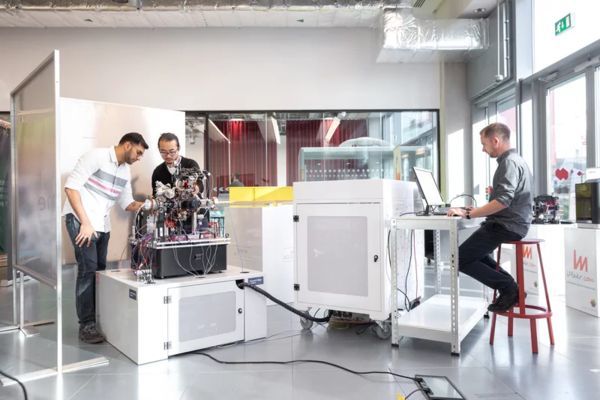
Quantum 'compass' could allow navigation without relying on satellites
"The UK’s first quantum accelerometer for navigation has been demonstrated by a team from Imperial College London and M Squared. Most navigation today relies on a global navigation satellite system (GNSS), such as GPS, which sends and receives signals from satellites orbiting the Earth. The quantum accelerometer is a self-contained system that does not rely on any external signals. This is particularly important because satellite signals can become unavailable due to blockages such as tall buildings, or can be jammed, imitated or denied – preventing accurate navigation. One day of denial of the satellite service would cost the UK £1 billion. Now, for the first time, a UK team has demonstrated a transportable, standalone quantum accelerometer at the National Quantum Technologies Showcase, an event demonstrating the technological progress arising from the UK National Quantum Technologies Programme – a £270m UK Government investment over five years." [...]
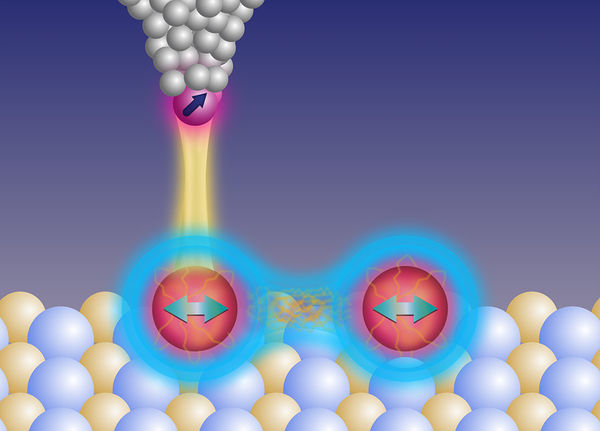
A Two-Atom Quantum Duet
"Magnetic atoms on a surface used as building blocks for quantum information processing - Researchers at the Center for Quantum Nanoscience (QNS) within the Institute for Basic Science (IBS) achieved a major breakthrough in shielding the quantum properties of single atoms on a surface. The scientists used the magnetism of single atoms, known as spin, as a basic building block for quantum information processing. The researchers could show that by packing two atoms closely together they could protect their fragile quantum properties much better than for just one atom. The spin is a fundamental quantum mechanical object and governs magnetic properties of materials. In a classical picture, the spin often can be considered like the needle of a compass. North or south pole of the needle, for example, can represent spin up or down." [...]
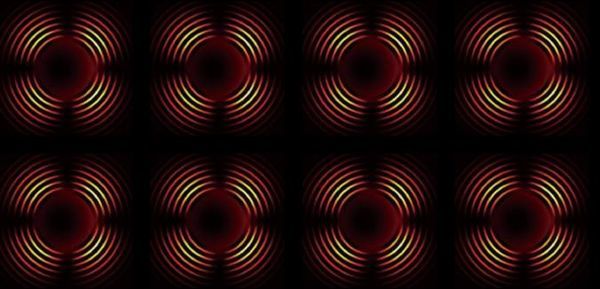
New hyperbolic metamaterial fabricated by researchers at King's College London
"A new type of hyperbolic metamaterial has been developed by researchers at King’s College London (KCL) allowing researchers have greater flexibility of manipulating light-matter interactions at the nanoscale. Hyperbolic Metamaterials are artificial subwavelength-structured media that exhibit unusual optical properties and display indefinite dispersion. They are usually fabricated as metal nanorod assemblies or multilayers on substrates. Researchers in the Department of Physics at KCL have now developed a version of a hyperbolical metamaterial in colloidal form. Published in Laser & Photonics Reviews these hyperbolic metaparticles are dispersed in a solution and may find applications in plasmon‐enhanced spectroscopy, nanolasers, design of nonlinear phenomena, photothermal conversions, and hot‐electron generation. Dr Pan Wang was able to make hyperbolic metaparticles using a wet chemistry method coating nano-objects with alternating silica and gold multishells." [...]
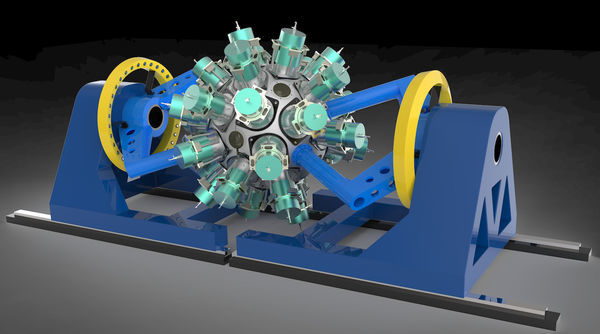
A Next Step for GRETA: A Better Gamma-Ray Detector
"Instrument will provide a more sensitive gauge of nuclear structure, processes A new high-resolution gamma-ray detector system – designed to reveal new details about the structure and inner workings of atomic nuclei, and to elevate our understanding of matter and the stellar creation of elements – has passed an important project milestone. When this system – the Gamma-Ray Energy Tracking Array, or GRETA – is combined with an existing detector array called GRETINA (for Gamma-Ray Energy Tracking In-beam Nuclear Array), it will create a full spherical array. Gamma rays are highly penetrating, highly energetic forms of light that are emitted from excited nuclear states. GRETINA was completed in 2011 and has demonstrated the power of a gamma-ray tracking detector for nuclear physics. The U.S. Department of Energy’s Lawrence Berkeley National Laboratory (Berkeley Lab) has had a leadership role in GRETINA and now GRETA. The GRETA project includes researchers at Argonne and Oak Ridge national laboratories and at Michigan State University." [...]
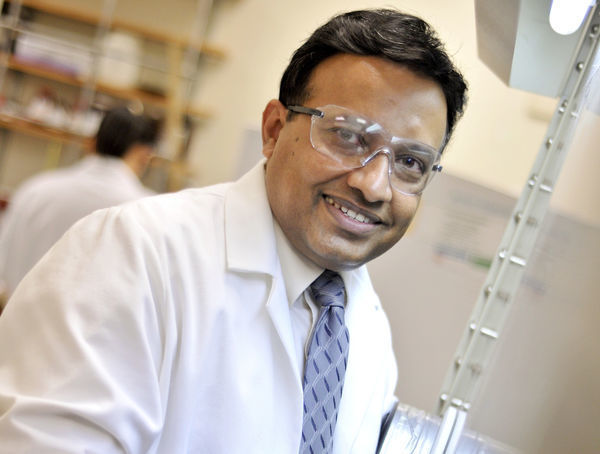
UTA researchers find cheaper, less energy-intensive way to purify ethylene, the raw material for widely used plastics, industrial compounds
"Researchers at The University of Texas at Arlington have filed a provisional patent application on a new copper compound that can be used to purify ethylene for use as a raw material in the production of plastics such as polyethylene or PVC, as well as other industrial compounds. Ethylene is produced from crude oil but is usually obtained as a mixture containing ethane. Manufacturing processes using ethylene usually require pure, or 99.9 percent, ethylene feed-stock. “Existing technologies to separate ethylene and ethane use enormous amounts of energy and require high levels of capital investment,” said Rasika Dias, UTA distinguished university professor of chemistry and biochemistry. “Our new technology uses a copper compound that can selectively absorb ethylene in the solid state, leaving ethane out, with the minimum amount of energy release,” he added. Ethylene absorption by the newly discovered copper complex is easily reversible, so the absorbed ethylene can then be released and recovered using mild temperature or pressure changes, resulting in the regeneration of the starting copper complex, which can be reused multiple times." [...]
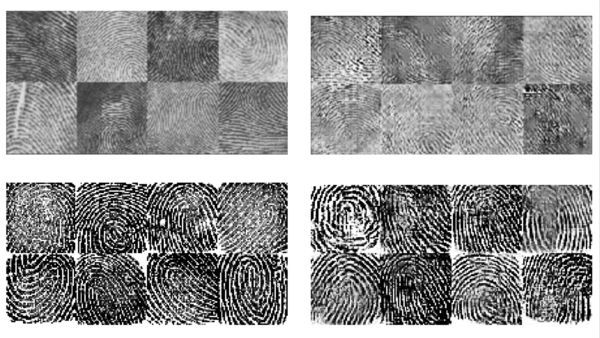
Researchers Created Fake 'Master' Fingerprints to Unlock Smartphones
"It’s the same principle as a master key, but applied to biometric identification with a high rate of success. AI can generate fake fingerprints that work as master keys for smartphones that use biometric sensors. According to the researchers that developed the technique, the attack can be launched against individuals with “some probability of success.” Biometric IDs seem to be about as close to a perfect identification system as you can get. These types of IDs are based on the unique physical traits of individuals, such as fingerprints, irises, or even the veins in your hand. In recent years, however, security researchers have demonstrated that it is possible to fool many, if not most, forms of biometric identification. In most cases, spoofing biometric IDs requires making a fake face or finger vein pattern that matches an existing individual." [...]
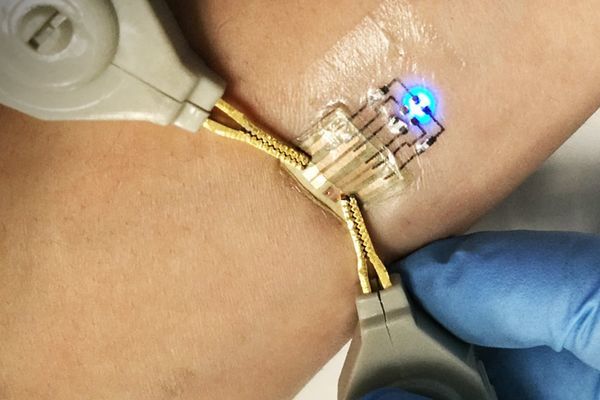
Electronic Tattoos Add Power to Wearable Computing
"Researchers from Carnegie Mellon University's College of Engineering and the Institute of Systems and Robotics at the University of Coimbra, Portugal, have developed a simple, efficient method to make robust, highly flexible, tattoo-like circuits for use in wearable computing. The low-cost process adds a trace of an electrically conductive, liquid metal alloy to tattoo paper that adheres to human skin. These ultrathin tattoos can be applied easily with water, the same way one would apply a child's decorative tattoo with a damp sponge. Other tattoo-like electronics either require complex fabrication techniques inside a cleanroom or lack the material required for stretchable digital circuit functionality on skin. Carmel Majidi, an associate professor of mechanical engineering and director of CMU's Soft Machines Lab , and Mahmoud Tavakoli, director of the Soft and Printed Microelectronics Laboratory at the University of Coimbra, partnered to develop methods for direct printing of stretchable electronic circuits. The tattoos are being developed under the Strechtonics project, one of the Entrepreneurial Research Initiatives of the Carnegie Mellon-Portugal Program, funded by the Fundação para a Ciência Tecnologia (FCT) and coordinated by Professor Aníbal Traça de Almeida." [...]
Modelos 3D
Com a disponibilidade de ferramentas que permitem dar azo a nossa imaginação na criação de peças 3D e espaços como o thingiverse para as publicar, esta rubrica apresenta alguns modelos selecionados que poderão ser úteis.
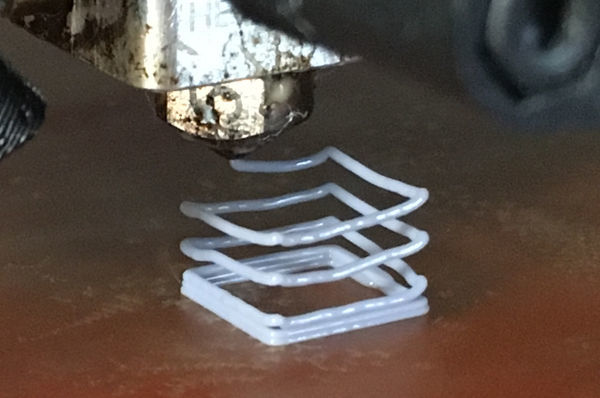
Midair 3D Printing: Making Coil Springs Without Support
"Most 3D printable parts are designed to limit overhangs to 45 degrees or less. That's because maker-style 3D printers (technically FDM) build each layer from the bottom up, fusing the current layer onto the previous, and if there's nothing below a layer, the plastic will sag (or worse yet, form a glob and potentially ruin your part). To get around the overhang limit, parts are often significantly modified (with chamfers to reduce overhangs) or support material is used to hold up sections that extend too far. But neither approach works all the time; sometimes you can't chamfer away the overhangs and/or rely on support material to bail you out. " [...]
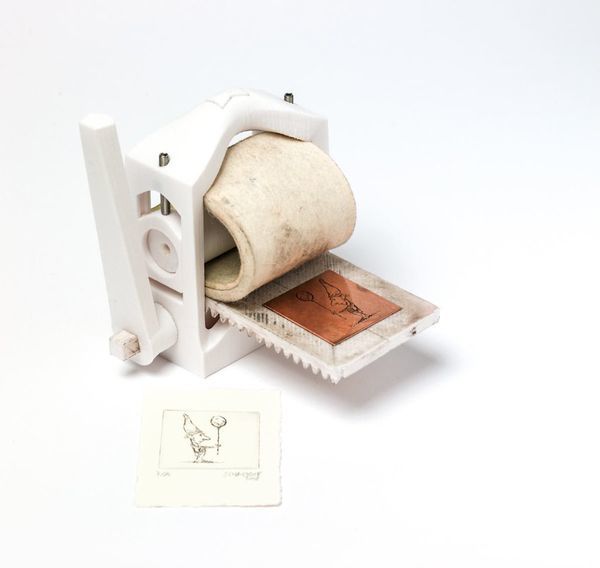
3D Printed Etching Press
"Get a taste of traditional printmaking with the world’s first 3D-printed etching press! With the help of 3D printing, these unique art techniques are finally accessible to a lot more people, and in places where printmaking wasn’t possible before. Printmaking has been around for 500 years, used for illustrating books, printing banknotes, and duplicating famous paintings. Today, printmaking is known for its distinct look and is used by artists around the world, but lots of people don’t have access to printmaking due to the high costs of a press. Etching presses for intaglio printing are especially hard to find due to the high amount of pressure that’s needed. So I designed a working press that can be produced with a 3D printer: the Open Press Project ." [...]
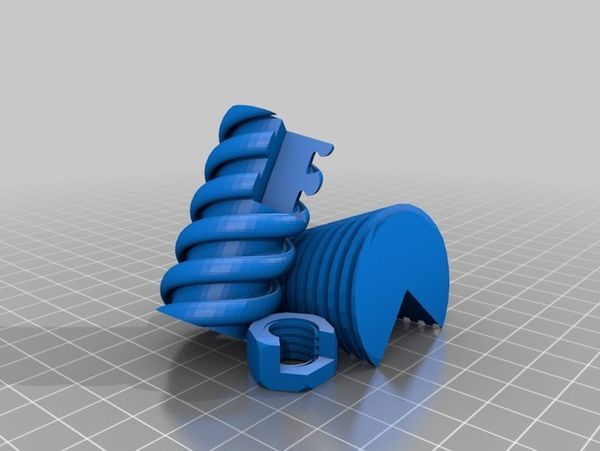
Revolve2 OpenSCAD library module
"Revolve2: Better stability, clarity and added functionalities. If you liked Revolve, you will love Revolve2! Introduction This OpenSCAD module allows for rotational extrusion of generic user-defined profiles, introducing a pitch in the longitudinal direction, the most common application being the creation of screws. The solid is built as a single polyhedron by transforming the 2D points found in the profile vector. No boolean operation is necessary, aiming at obtaining the ultimate performance by producing the simplest possible object for the desired level of detail. Arguments revolve(profile = [[]], length, nthreads=1, scale=1, preserve_thread_depth=false, preserve_thread_shape=false, $fn=$fn, force_alternate_construction=false) profile vector of 2D points defined as: [[z_1, f(z_1)], [z_2, f(z_2)] ... [z_n,f(z_n)]]." [...]
Projetos Maker
Diversos Projetos interessantes.
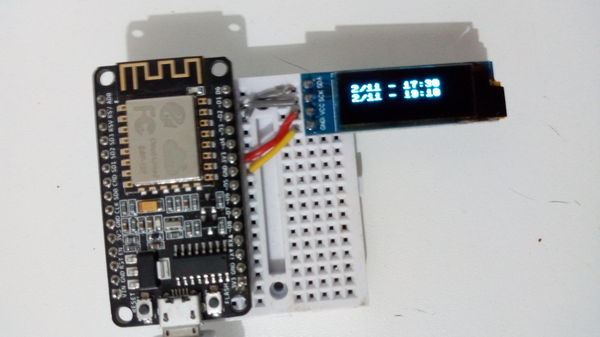
ISS-Overhead-Check
"Check International Space Station Pass Times Over Location using ESP8266 and MicroPython. This project was created to run on my Nodemcu Wifi Esp8266 with Oled Display 128x32, I could't test on other devices. " [...]
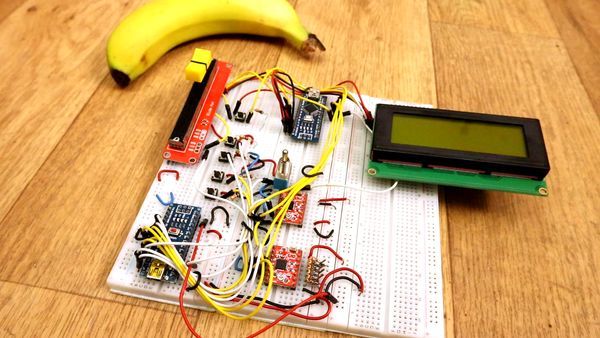
Manual CNC Control
"We've been working on this setup for a while. We wnated to control two axis of a CNC machine manually. You could add this setup to any CNC machine. In my case was to a milling machine and in case of Alpha Mods was in case of a precision table for tower drill. The setup has an LCD so we could see the distance. Then we have push buttons to move the axis and also to reset the position to 0." [...]
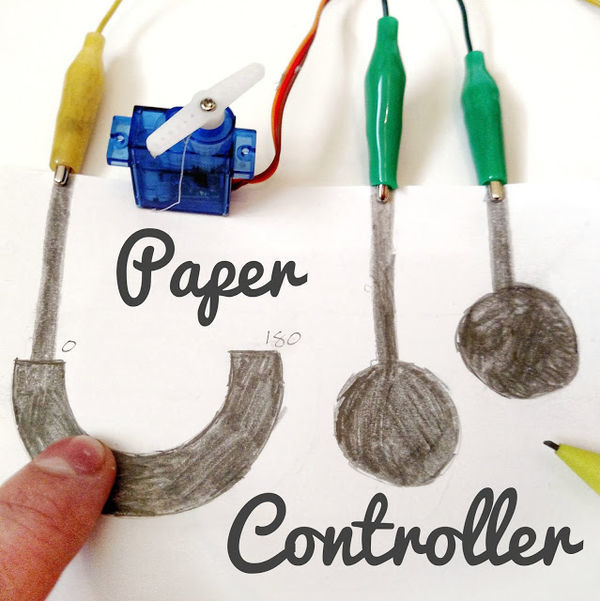
Arduino Paper Controller (buttons, slider)
"This project allows you to draw your own controller to be used with anything. It utilizes capacitive sensing and the conductive properties of graphite to send data to an Arduino board. Materials: Alligator clips Arduino Breadboard Jumper wires 10M Ohm Resistors (x3) Pencil Paper Servo Motor LED (x2) resistors for LEDs (Usually 220 Ohm) (x2)" [...]
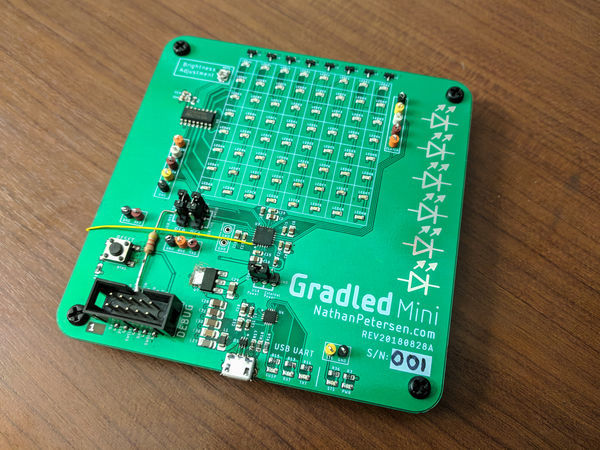
Gradled Mini: Prototype Modular Discrete LED Display
"This project came into being during my senior year of college at UW-Madison as a personal side venture. In May 2019, I complete my undergraduate schooling. It is not uncommon for students to decorate their graduation “hats” to personalize them and make them stand out in the crowd of graduates during the commencement ceremony. Typically, people create artwork related to the university they attended (i.e. UW-Madison) and use markers, glitter, little stickers, etc to create the decoration. When it is my turn to partake in commencement, I also want to continue the hat-decorating tradition, but with a special twist: I want my hat to light-up and be able to show arbitrary artwork." [...]
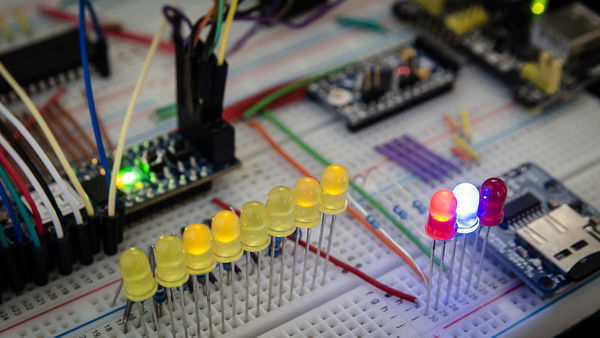
Simple Homebrew 6502 Computer
"After completing my VGA Generator project a while back, I’ve embarked on a new electronics project: building a simple 6502-based homebrew 8-bit computer on a breadboard. There are a bunch of similar projects online from which to draw ideas. Some projects set constraints such as only using contemporary parts of the 8-bit era, no FPGAs, no microcontrollers etc. In my case, I opted instead to keep the constraints minimal and the project simple. Concretely, I settled for the following: The CPU is a physical 6502 (i.e. not a soft core)." [...]
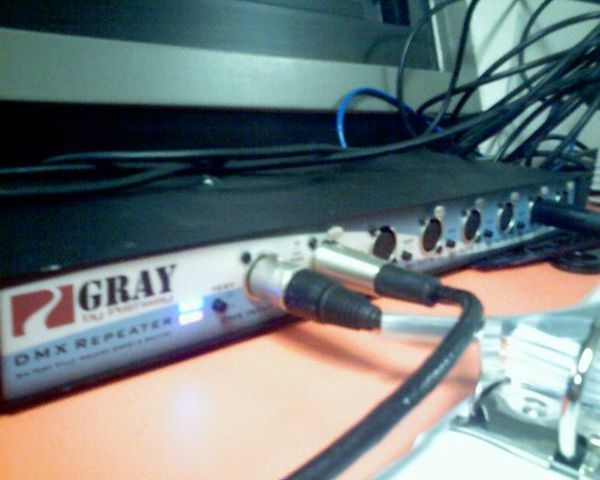
Introduction to DMX
"Introduction In this tutorial, we’ll cover DMX512 (Digital Multiplex with 512 pieces of information). Originally intended as a way to standardize communication among lighting dimmers, DMX512 has been adapted to control a variety of stage lighting and effects such as intelligent lights, gobos, lasers, and fog machines. DMX512 is even used in many architectural lighting scenarios (I’m looking at you Las Vegas). In this tutorial, we’ll go over what there is to know about how and when to implement DMX. History DMX512 was created in 1986 by an engineering commission for USITT (United States Institute for Theater Technology) as a way to control dimming channels on lights. In 1998, the ESTA began work in getting DMX to the point where it could be approved by ANSI and in 2004, DMX-512A was ANSI approved as the “Asynchronous Serial Digital Data Transmission Standard for Controlling Lighting Equipment and Accessories.” Basic Definitions Fixture/Slave: Any object that takes DMX input." [...]

CRT BOY
"Intro The CRT BOY is a simple project that tries to build a Game Boy clone using a small CRT screen. The end result will look like a even more retro Game Boy from the 80ies. The micro controller based on the ESP32 is not so retro is strong enough to emulate consoles from the 90ties. You should check out the prior relevant projects to have all the details on the esp32 game console componets: http://bitluni.net/esp32-composite-video/ http://bitluni.net/esp32-composite-audio/ http://bitluni.net/esp32-color-pal/ CRT The CRT I got from an old intercom is labeled as XG680F . I found similar ones in the google image search and checked the Chinese infos google translated. https://world.taobao.com/item/39620771319.htm A similar screen had more specs and info https://world.taobao.com/item/12491150672.htm Code For testing of the first part I have used my Tetris clone https://github.com/bitluni/TetrisSpaceX." [...]

Herb(ert): A Desk Plant with Automated Irrigation
"I have a history of over/under watering plants. Herb(ert) combines sensor data with edge IoT logic to automate watering and stay healthy! Story Inspiration In our connected world there is no excuse for letting houseplants die. I have been guilty of this several times in the past but that all changed when I met my new desk plant Herb(ert). This plant inspired me to use the technology I have available to ensure its health. My goal for this project was simple." [...]
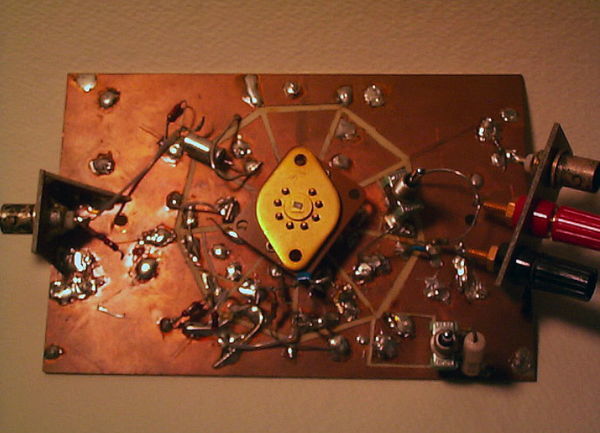
The LM383 Story
"or a while it was always a pleasure to see one of my ICs being sold to hobbyists. Although the LM383 had perhaps a typical life for an IC, it was sad to see the part being discontinued. But it is humorous when the TDA2002 is often referred to as a replacement for the LM383. As a matter of fact, the LM383 is really a reverse engineering of the TDA2002. Credit should be given to the design engineer Bruno Murari who was working for SGS at the time. He was the one who came up with a way to do an automotive power amplifier using only five pins." [...]
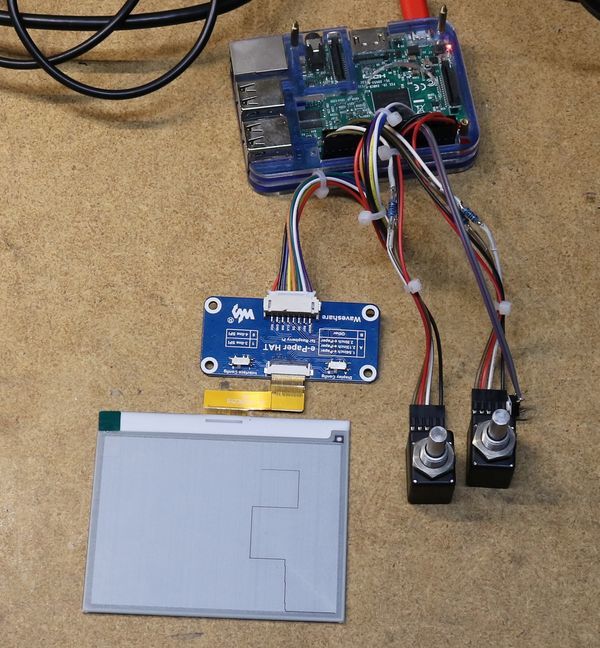
Making the e-paper equivalent of an Etch-a-Sketch
"Introduction to e-Paper displays e-Paper (aka e-ink) displays are a fascinating new technology that most people will be most familiar with from the proliferation of Kindle and similar reading displays. The unique property of the e-paper display is that it retains its image even with power not applied. This means that it can require very low power to operate the user interface of an e-paper device, since power only really needs to be applied to the display when the content is actually changing. For a reader, the user spends most of his or her time reading the page, and page flips are a relatively small fraction of the overall experience, so it’s a perfect fit. e-Paper displays have excellent contrast even when viewed in bright sunshine and are generally not backlit as LCDs are. The original kindles had no lighting whatsoever built into them, and one had to add a third-party light to read them in the dark, just like one would read a paper book." [...]
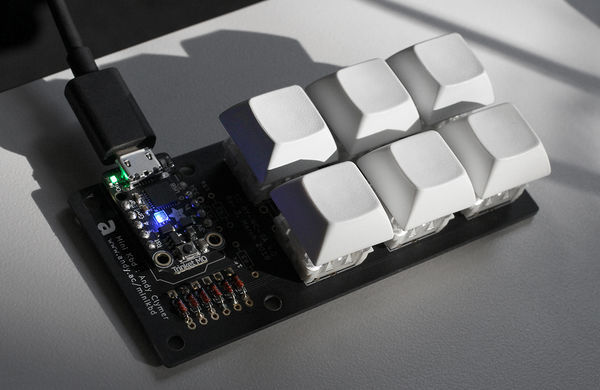
MiniKbd
"The MiniKbd is a USB device based on the Adafruit Trinket M0 development board which is programmable with CircuitPython. The parts are available for sale on Tindie, with build documentation and software samples available in this repo. The MiniKbd is programmable with CircuitPython, each key can be easily customized to perform any combination of keystroke or mouse movement. When plugging it in over USB, your computer will recognize it as a “USB HID” (Human Interface Device), as if a keyboard or mouse had been plugged in. The keystrokes that are output by the MiniKbd can then be configured by editing the CircuitPython code running on the device. The project came out of the idea of wanting a keyboard that simply had a larger set of arrow keys that I could position to the left side of my keyboard." [...]
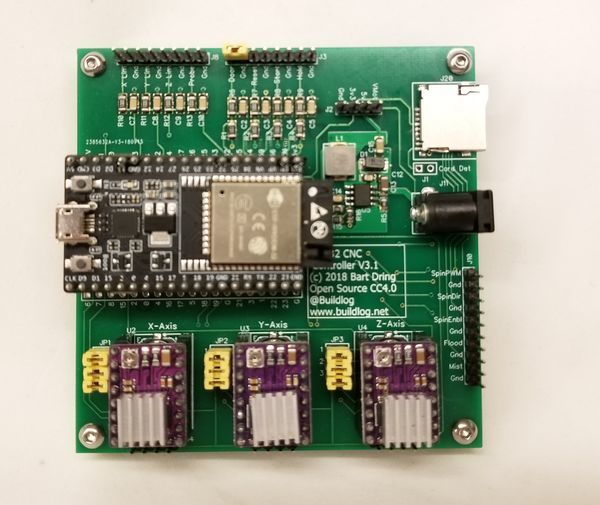
Grbl (CNC Controller) For ESP32
"This is a port of Grbl for the ESP32. The ESP32 is potentially a great target for Grbl for the following reasons - Faster - At least 4x the step rates over Grbl - Lower Cost - - Small footprint - - More Flash and RAM - A larger planner buffer could be used and more features could be added. - I/O - It has just about the same number of pins as an Arduino UNO, the original target for Grbl - Peripherals - It has more timers and advanced features than an UNO. These can also be mapped to pins more flexibly. - Connectivity - Bluetooth and WiFi built in. - Fast Boot - Boots almost instantly and does not need to be formally shutdown (unlike Raspberry Pi or Beagle Bone) - RTOS (Real Time operating System) - Custom features can be added without affecting the performance of the motion control system." [...]
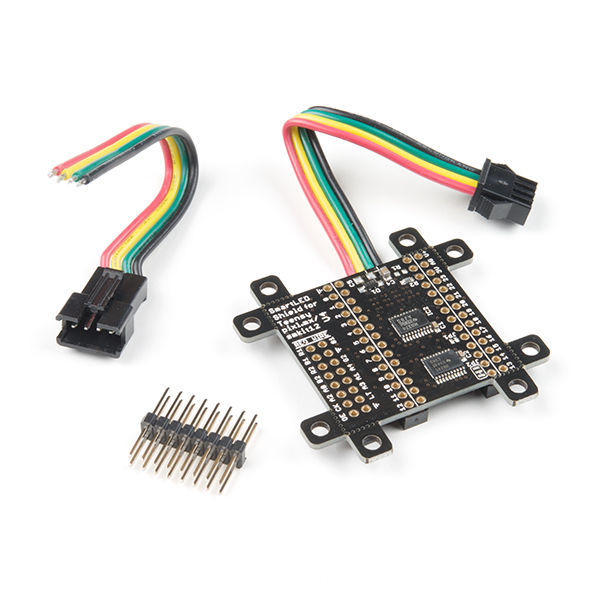
Getting Started with the SmartLED Shield for Teensy
"Introduction The PixelMatix SmartLED shield for Teensy makes it easy to connect to RGB LED matrix panels! The shield makes it easy to connect to the 16 pins required to drive the display, connects an external 5V supply to power the display and Teensy, and brings out the Teensy’s free signals to a convenient header. " [...]
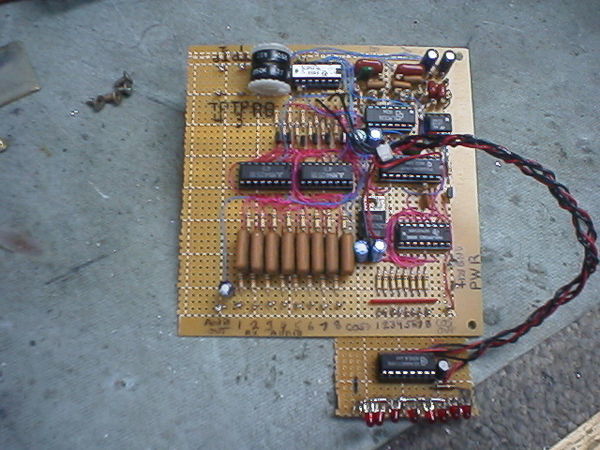
A simple 8-channel receiver voting controller for enhanced repeater coverage and usability
"One of the often-overlooked means of improving the coverage of an amateur radio repeater is the use of multiple receivers in a voting configuration. It's often the case that a user can hear the repeater fine, but for whatever reason cannot get back into it - particularly if they are using a portable radio (a handie-talkie) and a compromised antenna, such as a rubber duck antenna. By extending the reach of the receive portion of the system with several geographically disparate receivers on the same frequency the effective, usable coverage can be increased without the need to have a linked repeater system - which may require additional frequencies - and it reduces the necessity of the user to switch between linked repeaters to maintain coverage. While this article describes a specific 8-channel voting system, it should contain enough information to be able to implement a similar voting controller using other hardware. Why a voter? Why improve the receiver coverage without a commensurate improvement in transmitter coverage?" [...]
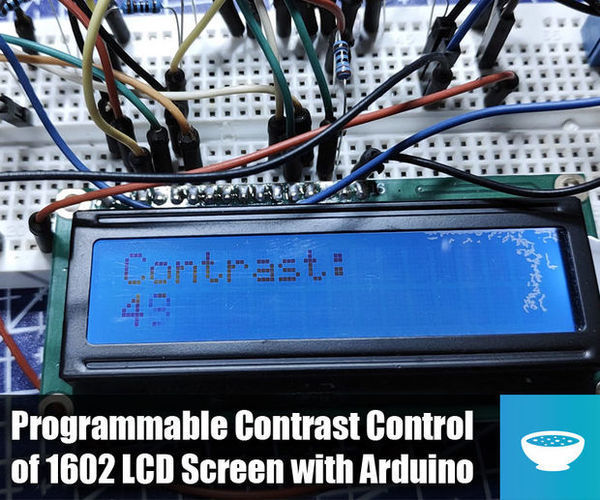
1602 LCD Contrast Control From Arduino
"While working on a new project Ive came across a problem where I wanted to control the backlight and the contrast of an 1602 LCD display through an Arduino but the display was really flickery. In a typical use case, the display contrast is adjusted through a variable resistor as per the datasheet. In such case, through the resistor we can adjust the voltage that is seen on the V0 pin and the contrast is adjusted accordingly. With the Arduino, the best thing we can output is a PWM signal with a different cycle but unfortunately the module is not happy displaying that. Before going into the schematic how we can fix this, let me explain you the code that I’m using. The first thing we need to do is to include the Liquid Crystal library so we can connect to the display." [...]

Candy Claw Machine - Arduino Based Arcade Game
"Eyes on the prize, Violet. Eyes on the prize! Get ready for a candy-grabbing face-off with your family and friends with this classic arcade game - the candy claw machine! But this time, its going to be a bit different - first, its going to be at your home, and second, youre going to make it yourself! Oh yeah! Heres bringing to you the evergreen Claw Machine with a touch of DIY!" [...]
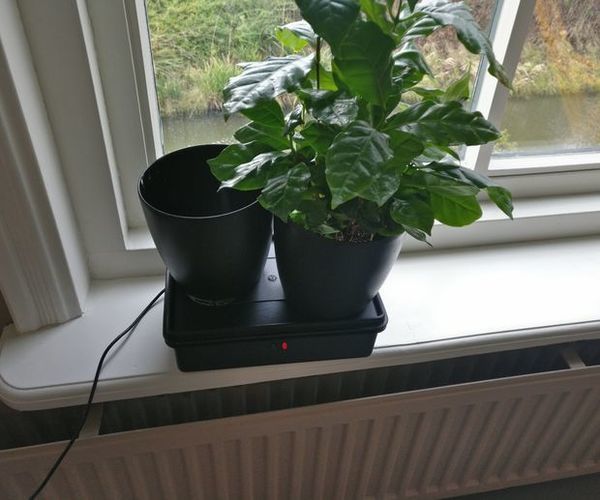
ESP8266 Smart Plant
"In this tutorial we wil guide you how to make a smart plant with an ESP8266. The tutorial includes hardware requirements, software requirements, a guide to make the ESP8266 work, a tutorial to setup Adafruit IO and a little troubleshooting guide. " [...]

Arduino Alarm With Digital Vibration Sensor
"This instructable is about how to make an easy and cheap alarm device by youself.All you need is basic knowledge in electronics and arduino programming. " [...]
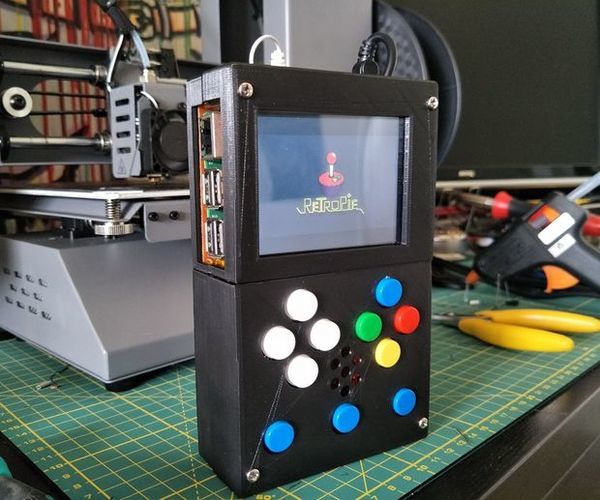
Homemade Handheld Console
"Welcome to my step by step guide on how to create your own DIY GameBoy with a Raspberry Pi 3 and the Retropie emulation software. Before starting this project, I did not have any experience with raspberry pi, retropie, soldering, 3d printing or electronics, therefor this project is designed to be as simple as possible for beginners and above and a great project to start if you've just picked up a Raspberry Pi. This project is designed for the Raspberry Pi 3. You may be able to create the same project using a Raspberry Pi 2, however I have not tried this and cannot guarantee it will work. " [...]
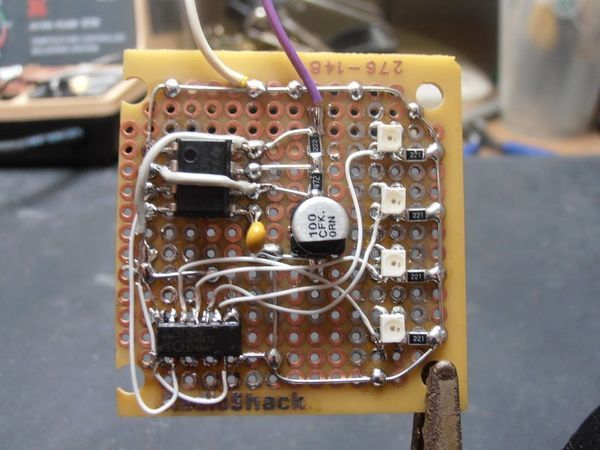
Put Your SMD Parts on Standard Perfboard
"Instructables is having an Electronic Tips and Tricks Contest now, so I thought I would share some of mine regarding the use of SMD parts and techniques on standard issue, single sided, good ole perfboard. Many of us more thifty types often find the parts to our creations out of old, broken, cheap electronics from all sorts of places. Of course in the modern age its pretty rare to see many, or any though hole components. While you could break out the CAD and laser printer to make your own PCB's, sometimes its a pain in the butt if you just want to wire something together and be done with it. The good news is that many SMD packages will fit on standard 0.1 inch perfboard with little hassle. Of course this does not cover all the possible SMD packages, but I hope it encourages you to try new ideas about getting these little packages of electronic goodness in your project." [...]
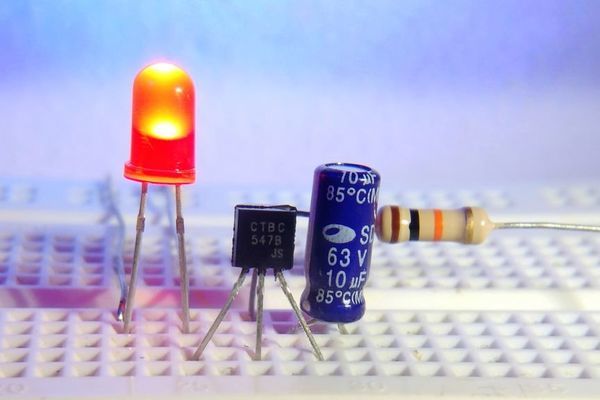
3 Easy Transistor Projects For Beginners
"In this instructables I will be making 3 Easy Projects using Transistors and some components and Battery. These are really easy projects that you can do for school project and can be constructed on breadboard and need NO Soldering!. The list of projects made here are: - LED Blinker - Automatic Night Light - Water Level Buzzer Indicator" [...]
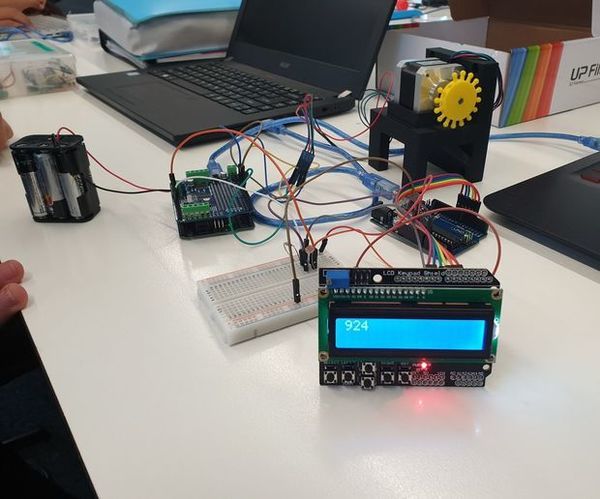
Light Controlled Stepper Motor + Wall Bracket/Stand
"This is stand is used to house an Arduino controlled stepper motor, designed to automatically control a curtain according to the light level in the room. You can also add an LCD screen to print this lightlevel. The 3D gear is only for demonstration, a real gear may be needed for practical application such as the curtain but also any other application you can think of. " [...]

Counting Punches with Circuit Playground Express
"Count punches or weight repetitions with Circuit Playground Express. Story Background The Circuit Playground Express (CPE) has a built in accelerometer. I used it to count how many punches or curls with a weight. MakeCode triggers an event when the strength of the three axis accelerometer crosses a threshold. For every punch, I wanted to a new neopixel to light up. When I reached the max number of reps in a set, I wanted a different light color to track how many sets I had completed." [...]

LED Marshmello Helmet for Under $50
"This year I decided to step up my old helmet (How-to video here) to a fully self contained LED version DJ Marshmello's helmet. The materials I used for this project were fairly inexpensive (links below) but finding things locally at hardware stores tended to be a little cheaper than the stuff I bought online. " [...]
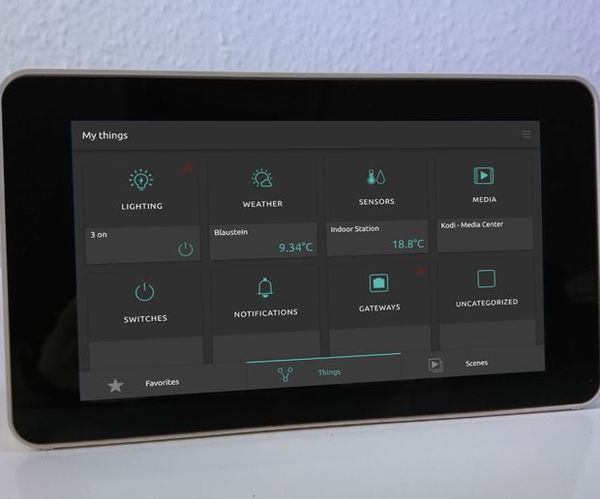
Open Source Smart Home With Touchscreen Control Panel
"Using a Raspberry Pi and 7" touchscreen with nymea:core and nymea:app to build a smart home system with touch control panel. The story For a while now I'm using nymea as my smart home solution with nymea:core on a Raspberry Pi and nymea:app on my phone. Initially I wanted to wall-mount a phone or tablet but results weren't that great. Phones are built for a pocket and that causes a lot of small fiddly issues when used in a different context. One example is waking up the screen: Phones typically have a hardware button on the side to turn on the screen which gets a real challenge to do if the thing sticks on a wall. Next thing is that mobile operating systems don't like apps running all the time in kiosk mode, yes, Android has a feature to lock an app to foreground but there are still cases where it wouldn't do the right thing." [...]
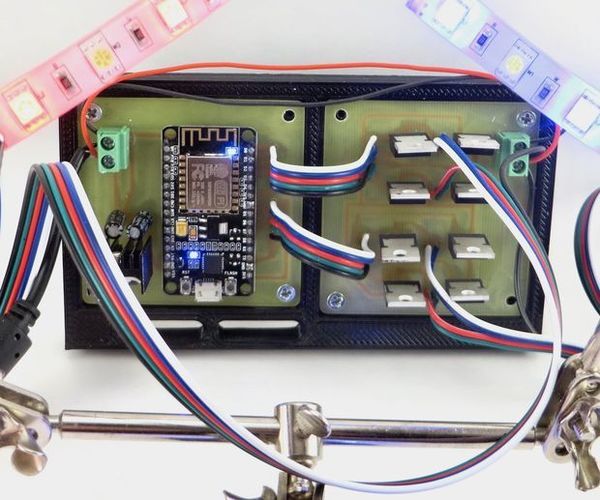
WiFi LED Light Strip Controller
"I started making backlit signs with LED light strips, and I was needing quite a few WiFi controllers for each project. For a single project, it could cost me hundreds of dollars just to buy WiFi controllers, so I decided to make my own. If you follow this Instructable, you will have a fully-functioning WiFi controller for your LED lights, along with an app for your iOS or Android phone or tablet. Actually, you'll get the equivalent of buying two WiFi controllers when you're done with this. This is a complete, start-to-finish solution. There are videos below (steps 5 and 6) of the controller being used with the app." [...]
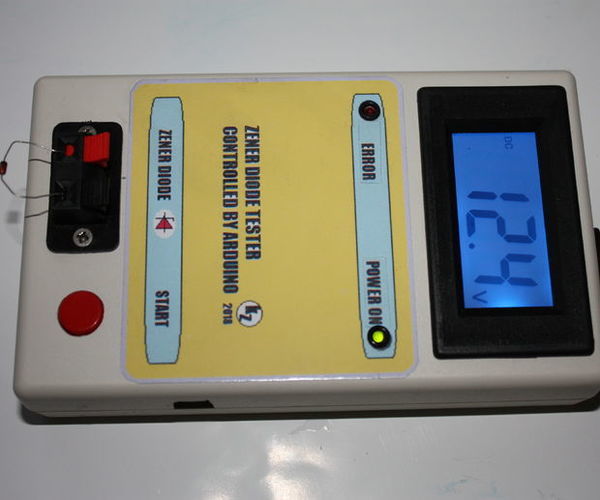
Arduino Zener Diode Tester
"Zener Diode Tester is controlled by Arduino Nano. Tester measure breakdown Zener voltage for diodes from 1.8V to 48V. Dissipation power of measured diodes could be from 250mW to a few Watts. Measuring is simple, just connect diode and press button START. Arduino Nano gradually connect range of voltages from lower to higher, in four steps. For each step, current is checked through measured Zener diode." [...]
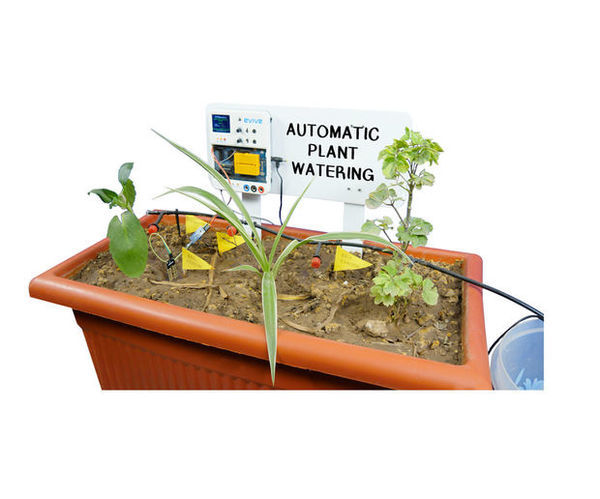
Automatic Plant Watering System Using Arduino Based Embedded Platform
"Going out on vacation poses a daunting question in your face: who in the world is going to water the plants at home while youre out?! If your neighbors are the kind type, then you might not have to worry much; if not, well, you need to arrange something then. This something is what this project is going to be about! The something that youre going to make in this project is the DIY Automatic Plant Watering System. Yes, you heard it right. With the help of the DIY Automatic Plant Watering System, you dont need to worry about your plants going dry while youre out holidaying; it will make sure that the lush and green all by its own!" [...]

How Infinity Mirrors Work - With Experiments
"While I was building my first 2 infinity mirrors I started playing around with them and I noticed some interesting effects. Today I'll be explaining how infinity mirrors work. I will also be going over some of the effects that can be made with them. If you would like to see a video version of this instructable, you can view that here: https://youtu.be/LjWMxUitOHo Here are some of the parts I used to prepare for this instructable: My 2-sided, Desktop Infinity MirrorA Picture Float Frame (8x8 with 2 Panes of Glass)Partially Reflective FilmLED StripBarrel Plugs12vdc Power Supply" [...]

Light Hanger
"Hello! I have always thought my closet is dark and hard to see my clothes clearly. I also wanted to have separate lights installed inside the closet so that I have a better view on my clothes. So, I made a lamp, using a Lilypad and battery, that can be hung on a hanger in your closet The materials that are used for this project are: 1. LED lights 2. a button 3. conductive thread 4. pieces of fabric 5. Arduino Lilypad" [...]
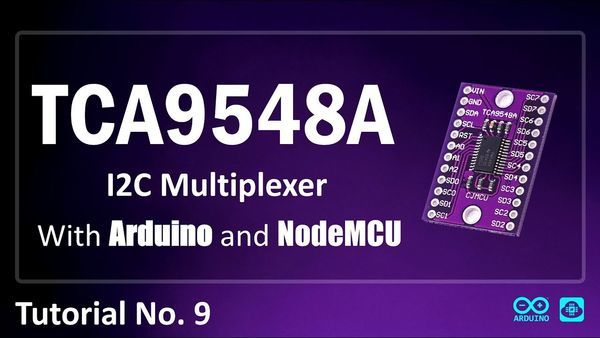
TCA9548A I2C Multiplexer Module - With Arduino and NodeMCU
"Did you ever get into a situation where you had to wire up two, three or more I2C Sensors to your Arduino just to realize that the sensors have a fixed or same I2C address. Moreover, you cannot have two devices with the same address on the same SDA/SCL pins! So, what are your options? Put them all on the TCA9548A 1-to-8 I2C multiplexer to get them all talking to each other on the same bus! The TCA9548A Breakout enables communication with multiple I2C devices that have the same address making it simple to interface with them. " [...]
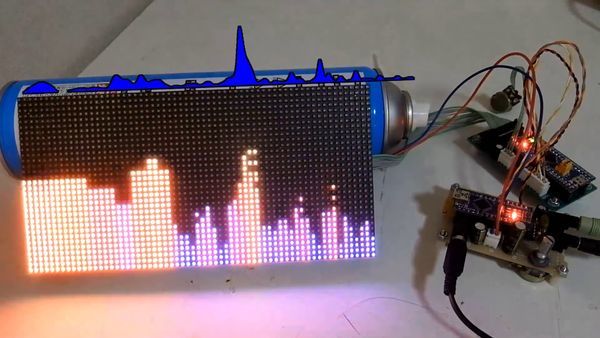
Arduino and full-color dot matrix LED made audio speaker
"It continues to be a full color dot matrix LED from last time. In the previous article, we created an LED panel controller that makes it easy to display the full color dot matrix LED from the SPI, and created a video player using it. However, the LED panel controller I created is not only for movie playback but also for full color dot matrix LED to be handled like SPI connected graphic display, so it is possible to use more general purpose. So I decided to create an audio spectrum analyzer with Arduino nano with a full-color dot matrix LED of 64 * 32 pixels and LED panel controller this time. When examined with Arduino and a spectrum analyzer, seven bands using MSGEQ 7 seem to be common. However, in 7 bands, the dot matrix LED of horizontal 64 pixels can not be fully utilized." [...]
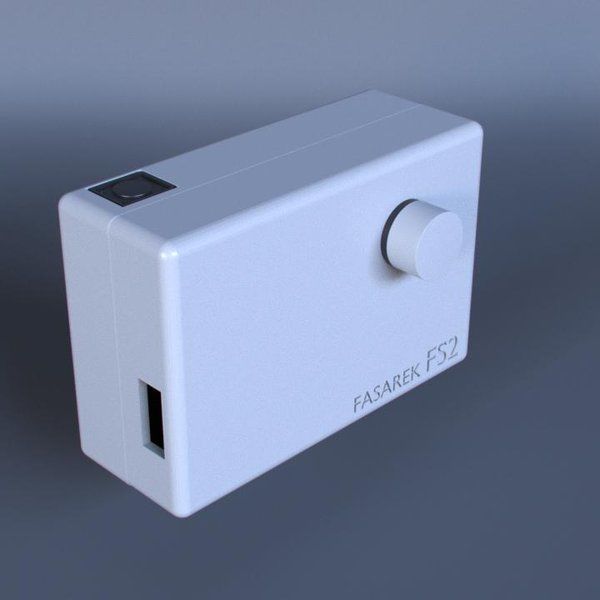
ESP32 / 8266 WiFi instant Camera
"The FS2 is a digital Polaroid that uploads the photo instantly to the cloud This WiFi instant camera is powered by a 2000mA/hr LiOn battery and Espressif state of the art WiFi "System of a Chip" allowing to be about 15 hours online and take hundreds of pictures. Press the shutter button and the JPEG will be uploaded to a digital gallery in the next 4 seconds. Its a pure WiFi camera, without a memory card, so you need to be online to use it. The ESP8266 version allows 3MB of SPI Flash system as offline photo storage. The ESP32 version has save on Spiffs disabled since it's slower (Didn't found out why). It supports also a small oled display (128x64 pixels) and the upload API returns a small thumbnail." [...]
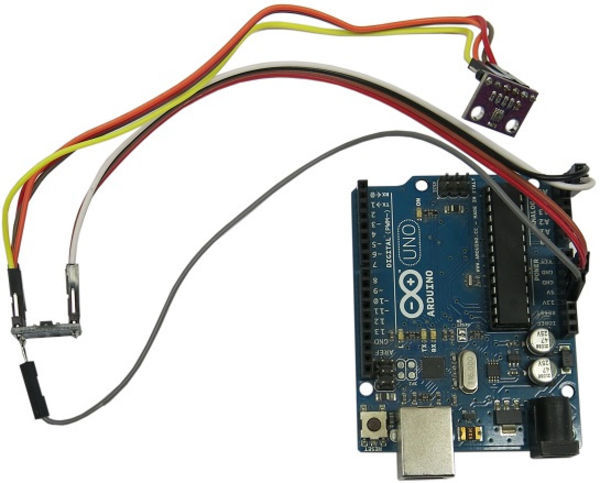
open source bare-metal C firmware and documentation for microcontrollers
"iconomix-fwlib is a collection of open source C firmware and documentation for microcontrollers to develop portable bare-metal code that is vendor and architecture neutral (or easier to reuse). It is tough to find the best compromise between lean 8-bit targets, middle-of-the-road 16-bit targets, and resource rich 32-bit targets, but this cross-platform library aims to provide a good foundation before you are forced to add target specific code and getting locked in. Click HERE to view the complete online documentation. Click HERE to download releases of the open source library (source code and offline documentation). Goals Teach good firmware development practices to guide the next generation of professional embedded engineers. Share source code, knowledge and expertise with our global community of engineers, scientists and enthusiasts." [...]
That's all Folks!


